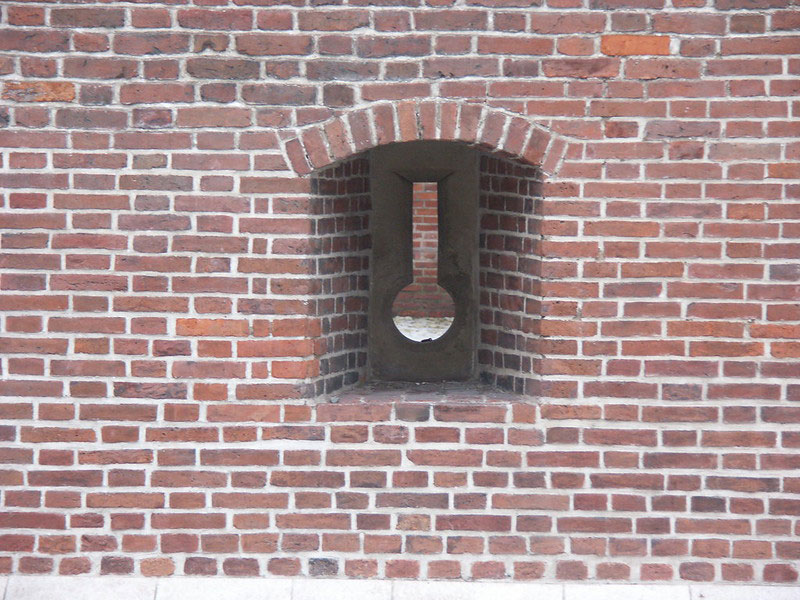
These days, US democracy is under threat. And efforts to protect democratic institutions are critically important. But the threat is multifaceted. Indeed, in many respects the nation is already a plutocracy—that is, governed and controlled by a wealthy elite. More and more, in America, it is the billionaires who rule.
If evidence is required, just look at what happened in 2021 to President Joe Biden’s promise to tax the rich. Despite an overwhelming majority of people supporting a wealth tax or a billionaires’ income tax, the US Senate killed both measures. At the same time, a hobbled Build Back Better bill adds new tax breaks for wealthy taxpayers by expanding the state and local tax deduction, also known as “SALT.” Guess who is calling the shots?
Congress has failed to increase federal taxes on the rich despite the explosion of wealth by the country’s wealthiest one tenth of one percent and by its billionaires who, though less than 0.0005 percent of the nation’s population, have outsized power. Depending on which day of the week you check—wealth is closely tied to stock market values—US billionaires have added $2 trillion to their holdings (or is it hoardings?) since the pandemic began. Two trillion, by the way, has a “2” in front of twelve zeroes.
Plainly, our political and economic system is rigged to benefit the elite. The wealthy fund political candidates and have outsized influence over elected officials. They own mansions and yachts that allow for hobnobbing with presidents. They fund think tanks and media outlets that set the dominant narrative. And they make very visible charitable contributions to polish their images—just in case someone questions how they earned all that money.
Walk into virtually any major art museum and what do you see? Benefactors’ names are etched onto the building and appear prominently in the galleries. Their art is on the walls, with paintings chosen by curators whose positions they fund. Heck, you don’t even have to walk into the museum—the Koch fountain sits outside in front of the Metropolitan Museum of Art. Who doesn’t love gushing water? Or medical centers? Or new dormitories? Don’t look behind the curtain and ask if the people responsible for such largesse made their money selling guns, tobacco, or opioids—or are blocking meaningful action on the climate emergency.
As ProPublica has made clear, billionaires will pay little or no income taxes on those trillions. For example, reportedly, between 2014 and 2018, Jeff Bezos paid an average effective tax rate of less than one percent.
One mechanism to achieve such outcomes are charitable contributions. The rich can make charitable contributions of the appreciated value of their investments and not only get a charitable deduction against other income they might have (up to certain limits) but avoid paying any tax on the investment gains.
Contrary to the old saying that “nothing is certain but death and taxes,” for many of the elite what is certain is evasion from taxes. Nowhere is this more obvious than with the estate tax. As Gary Cohn, chief economic advisor to former President Donald Trump, once said, “Only morons pay the estate tax.” In large part, this is thanks to the charitable deduction. When billionaires who signed the Giving Pledge give half of their estates to charity, the value of their estates that should have been collected in taxes (the current rate is 40 percent) will instead most likely go into their private foundations.
As Rob Reich argued in his book Just Giving, philanthropy is a tax-subsidized extension of plutocracy, and the subsidy is absurd. When a middle-class taxpayer gives $100 to her alma mater, she gets no tax benefit because she doesn’t itemize deductions, and even if she did it would be a small fraction of her gift because she’s in a low tax bracket. However, when the billionaire sends his $100 check, depending on which state he lives in and what the state’s tax policies are, he will get tax benefits of at least $40, and, in the case of donated stock, as much as $70-90.
Why Current Reform Legislation Is Inadequate
The nation’s current system incentivizes the wealthy to make charitable contributions even as most Americans receive hardly any tax incentive for donating. For private foundations, this system is highly functional. Donations from the wealthy plus a booming stock market have helped private foundation assets grow to over $1.3 trillion.
Among foundations, as with society at large, a few at the top have dominant positions. Indeed, one tenth of one percent of them control 40 percent of these assets.
Lately, donor-advised funds (DAFs) which total nearly $160 billion have been getting a lot of attention. Although growing, these DAF funds still represent only a fraction of the wealth held by foundations and an even smaller portion of the $13 trillion in combined wealth held by the nation’s richest one-tenth of one percent.
Sign up for our free newsletters
Subscribe to NPQ's newsletters to have our top stories delivered directly to your inbox.
By signing up, you agree to our privacy policy and terms of use, and to receive messages from NPQ and our partners.
Nonetheless, DAFs are the main focus of current charitable reform efforts, as outlined in the Accelerated Charitable Efforts (ACE) Act. Of course, advocates like Jan Masoaka of Cal Nonprofits are not wrong when they say DAF distributions should be regulated, and the measure surely would do some good. But such reforms, even if passed by Congress as the legislation is currently written, will do little to retard rising megadonor domination of philanthropy. If advocates are serious about dismantling plutocracy in our nation’s giving systems, more severe medicine is required.
A Modest Approach to Democratizing Philanthropy: Three Critical Steps
To seriously curtail plutocratic control requires three key steps:
- Step up foundation payout requirements for large foundations.
- End loopholes that allow the wealthy to use charitable contributions to evade taxes.
- Increase charitable tax incentives for everyone else.
The combination of these steps is important. If public policy only reduces incentives for the wealthy to donate but fails to raise incentives for others to contribute, this risks reducing nonprofit sector revenue. But if public policy also replaces the largesse of the rich with the largesse of the many, then perhaps a more democratic philanthropy can truly take hold.
The place to start is with the private foundation payout requirement, which is now set at a minimum level of five percent (which includes charitable expenses). A modest proposal is to increase the payout requirement to 10 percent on foundation assets above $50 million (only two percent of foundations have assets in excess of $50 million). Distributions to DAFs and charitable expenses would each be limited to 10 percent of qualifying distributions for the purposes of meeting the payout requirement.
Why is this modest? The private foundation is a vehicle almost exclusively reserved for the rich, who get a current tax deduction for their gift to the foundation but are not required to distribute more than five percent of it per year to operating charities. Others have suggested no charitable deduction until the private foundation distributes the gift. Some have pushed for limiting the life of foundations to five or 10 years. With this proposed change in payout requirement, it will still take 25 years, with five-percent real investment returns, for a one-billion-dollar foundation to reduce its endowment by half and 50 years to reduce it by 75 percent. In other words, the donor’s grandchildren or possibly great grandchildren will still have control of a $250 million foundation.
A second key step is to put an end to one of the biggest abuses of the charitable deduction—namely evading capital gains tax through gifts of appreciated property or stock. This can be cured by valuing the charitable contribution at cost basis (as distinguished from market value). If one has stock that cost $10 and is now worth $100, the donor can either get credit for a $10 charitable contribution or sell the stock, pay taxes on the gain, and donate the balance.
Another loophole is the estate tax charitable deduction, a benefit available only to those lucky enough to exceed the estate tax threshold of $11.7 million for single people, $23.4 million for married couples. This deduction should be changed from 100 percent of estate value—which, as one law firm notes, essentially makes payment of the estate tax “voluntary”—to 50 percent for contributions to operating charities and 30 percent for gifts to private foundations or DAFs. If one has $50 million subject to the estate tax and donates it to charity, $25 million is still taxed.
Again, one might ask, why is this policy change “modest?” Although a strong argument can be made to eliminate entirely the estate tax benefit of charitable giving for the wealthy, this proposal allows a scaled-down charitable write-off. The bigger question, for which various studies come to conflicting conclusions, concerns just how much do tax incentives affect charitable giving levels by the wealthy. If the public subsidy for large donors is cut, will Jeff Bezos reduce his charitable giving and buy a second $500 million yacht? Investment manager Alliance Bernstein, for example, points to evidence that changes to the estate tax don’t affect charitable giving.
Even if there is a drop-off in giving by the rich, will the hole be filled by contributions from everyone else? It might be, if the current income tax deduction, which only benefits the small percentage of taxpayers who itemize, is replaced with a tax credit. The Congressional Research Service’s comprehensive review of the data points out the difficulty in making these assessments. What we know is that lowering the value of charitable deductions for those in the highest tax brackets, while increasing the giving power of people of modest means, would democratize who gives and encourage nonprofits to court the interests, and therefore the more diverse preferences, of a broader range of Americans.
A charitable tax credit could be structured to apply to all gifts, excluding the first $100, equal to 20 percent of the contribution, with the tax credit for gifts to private foundations limited to 15 percent. In this way, no matter where one is on the income ladder, or whether one itemizes deductions, a $500 charitable contribution would get an $80 tax credit ($500 less $100 exclusion multiplied by 20 percent). The $100 exclusion reduces both the cost of the tax subsidy and of administration.
As we enter a third year of the COVID-19 pandemic, the nation faces no shortage of crises. Yet the US donor class remains stingy. A study by University of California, Berkeley economist Gabriel Zucman found that in 2018 the 20 wealthiest Americans gave 0.8 percent of their wealth to charity; and, if you exclude Bill Gates and Warren Buffett, that number falls to 0.3 percent. At the same time, most of the wealthiest private foundations, with a few exceptions, stick to the five percent minimum legal payout. Rather than subsidies that fail to produce much-needed public investments, the donor class needs a kick in its assets. The proposal I outline here would provide at least a meaningful start.











